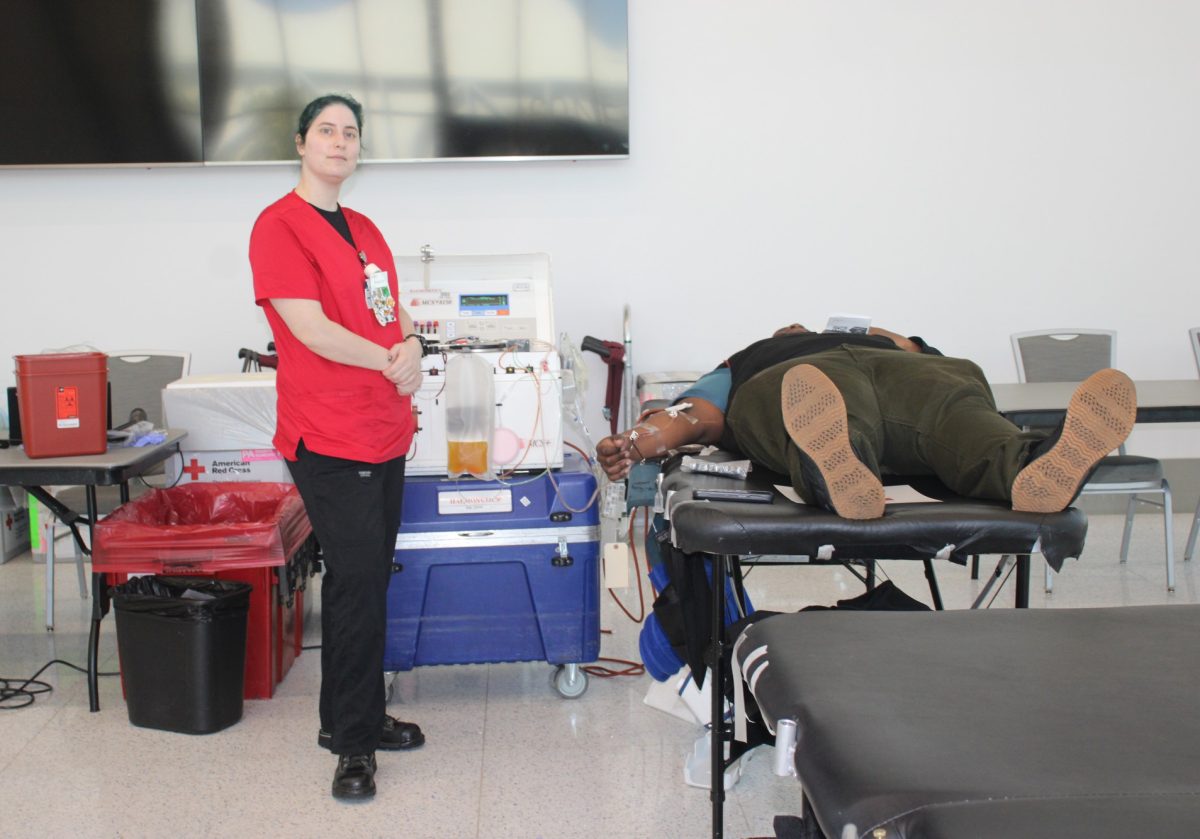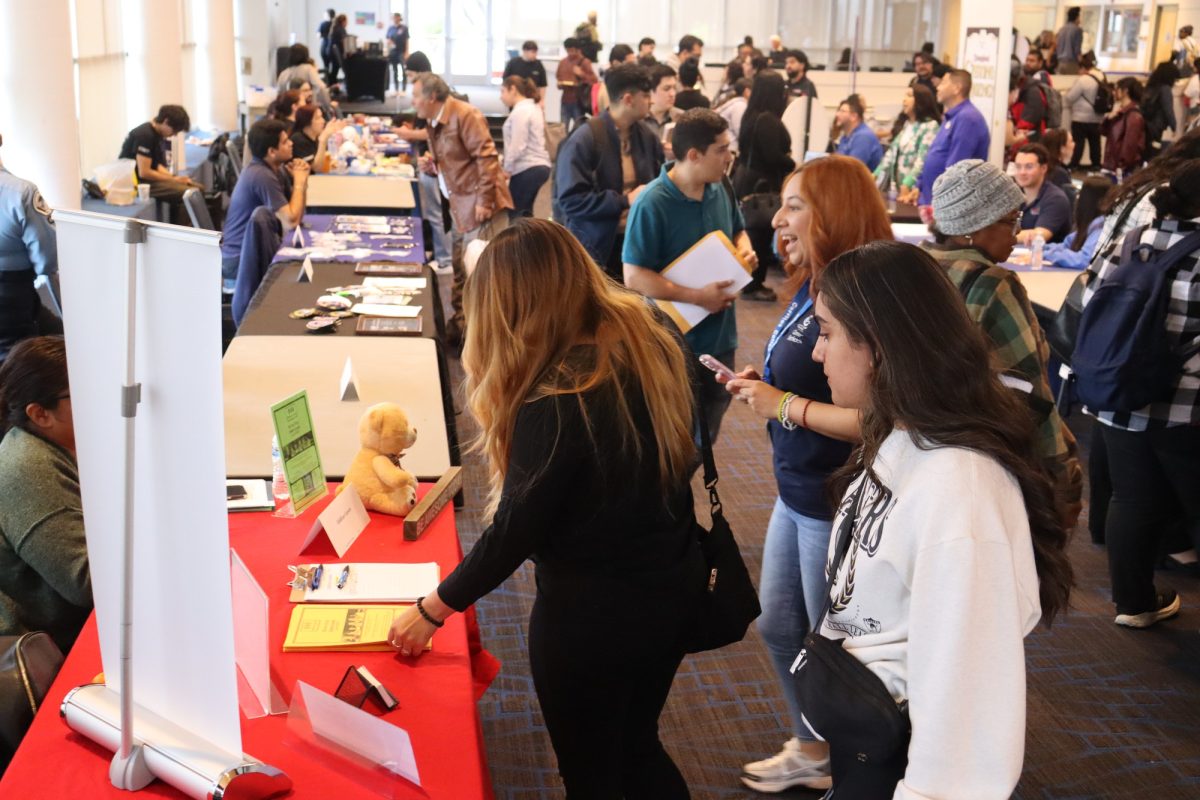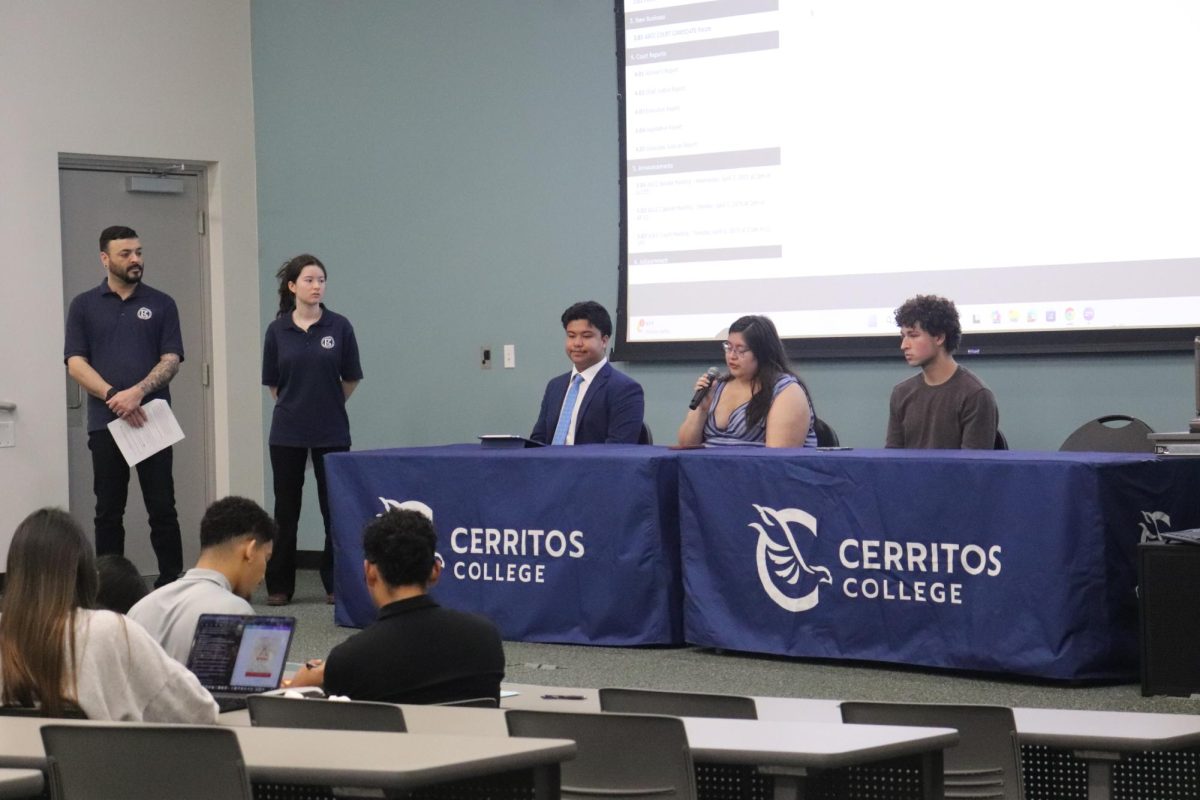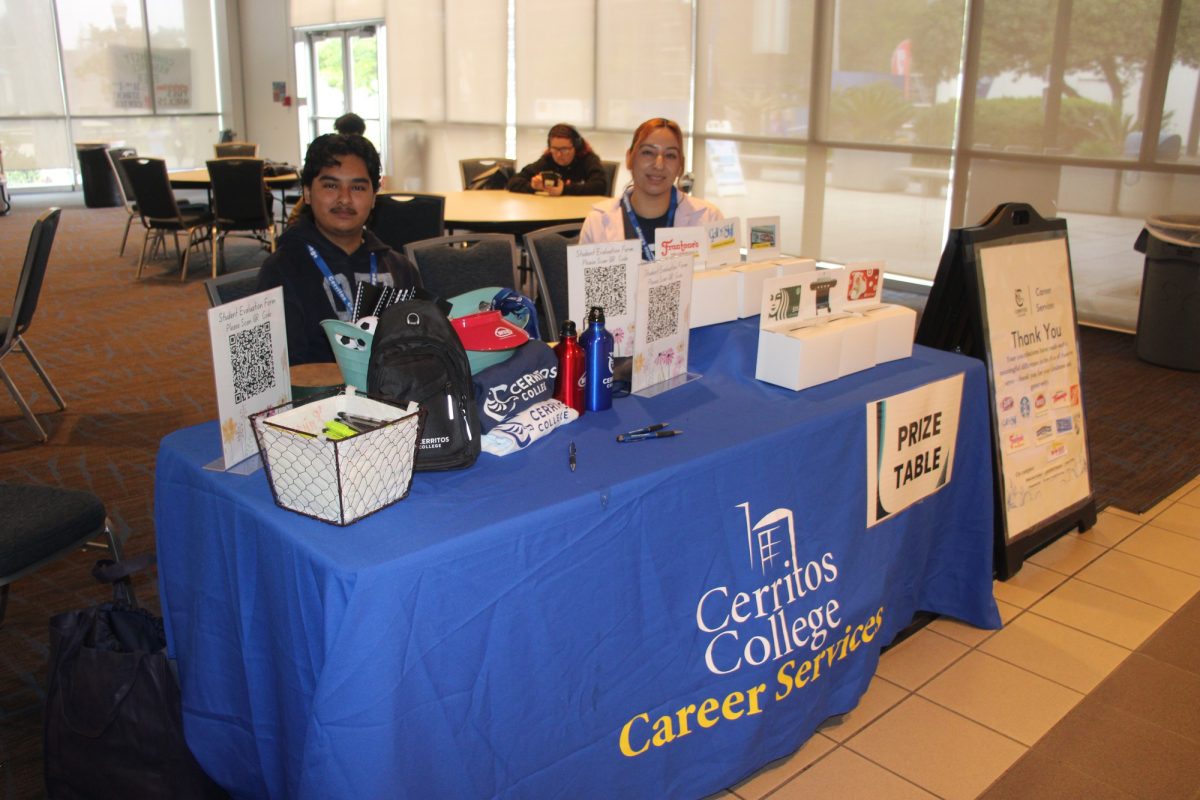No benefits.
No retirement.
Only their love of teaching.
Part-time professors spoke with students about their struggle hopping from campus to campus to make ends meet.
“‘I’m going to have surgery, is that okay,'” adjunct English professor Lyndsey Lefebvre said as she recalled the moment she once feared to let the school she was working for know of her absence for surgery hoping it wasn’t going to make her lose her job.
During the campus Equity Week part-time, or adjunct, professors had a booth outside the library with food.
They invited students over to let them know the behind-the-scenes story of an adjunct professor.
Traditionally, schools would have more full-time professors than part-time professors.
Adjunct professors were similar to contract employees, they sometimes were specialists hired for a class.
“Instead of that tradition staying that way, it didn’t,” Lefebvre said.
According to her, there are campuses that have 30 percent full-time employees and 70 percent are part-time.
Lefebvre said that one disadvantage of being adjunct is that her pay is less than those that are full-time.
“At Cerritos College, a full-time teacher in the classroom, doing the same job as me […] I make 49 percent of what they make, just teaching, so I’m not talking about service hours, I’m talking about in the classroom,” she said.
In order to make a living, Lefebvre has to check about five schools in the semester to see if she can pick up other shifts.
She said, “I go to three schools on Monday, and I was in my car for three hours and 40 minutes because I have to leave from home, drive across the county, teach for an hour and a half, come back home, go to another school in the afternoon and from that school to another school.”
Historically, adjunct professors tended to be wealthier people outside the institution.
Lefebvre said that money is not what professors in academia discuss, they talk about learning and classroom success.
She said, “As time has gone on, there is less and less full-time faculty and more part-time faculty and that’s not good for students.”
Richard Bair is an adjunct professor with the English as a second language program.
He also finds it difficult to make enough money teaching to pay his bills.
Extra activities Bair partakes in like being a senator for adjunct professors in the faculty senate do not earn him pay like a full-time professor would make as part of his or her’s service hours.
He said, “We need a voice on the faculty senate for part-timers and for my department, I wanted to represent my department.”
Bair said he started his Thursday morning at 9 a.m. and worked his hours in the Success Center.
He then went home for a nap to prepare for a 5:30 p.m. to 10 p.m. class later on in the day.
“My days are completely long, my sleeping patterns get all whacked, but in order to pay my bills I have to be able to go to three or four campuses,” he said.
Blair knows a part-timer that is working up to 10 hours a day.
“Every month, I’m barely scraping by, and I’m working at two different campuses,” he said.
The senator and adjunct professor said he has talked about negotiating contracts state-wise and not district-wise how it is done now.
He said, “Cerritos College is one of the lowest paid for adjunct faculty, I think it’s second to the bottom, so it’s really bad.”
This lifestyle for adjunct professors puts planning ahead somewhat difficult, given the fact that they have to be flexible in order to pick up other shifts to make more money.
Bair said, “I love my job, I love my students, but I feel exploited.”









